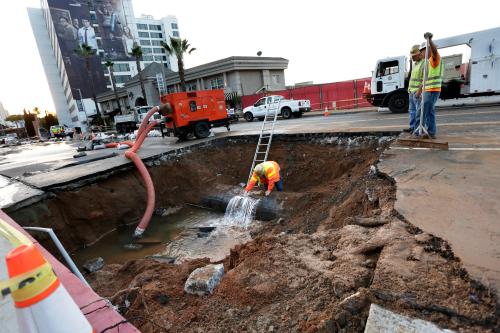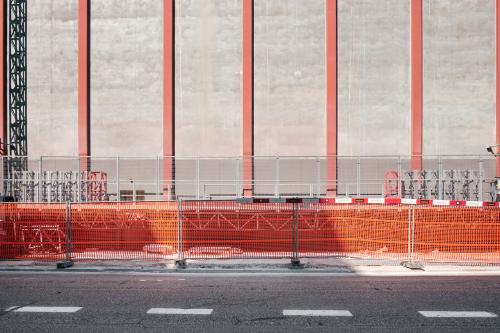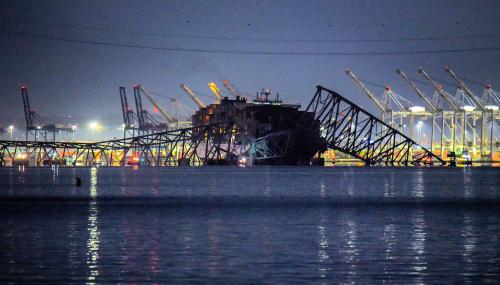The Trump transition has sent shockwaves across the country. Federal, state, and local leaders are not only confronting new political realities, they are also pondering the country’s future direction across a number of different policy areas. Additional infrastructure investment has represented one of the more tangible priorities of the incoming Trump administration, although several questions loom over the plan’s details and the issue of who is going to cover the bill.
While President-elect Trump has highlighted roads, bridges, and airports in this plan, federal policymakers will need to think more broadly about all types of infrastructure to support the economy, following the lead of many cities and states. Investing in resilient infrastructure can address a broader range of concerns in this respect. By helping regions withstand extreme weather events and adapt to a variety of climate pressures, leaders across all levels of government can create more sustainable, durable infrastructure with a legacy that lasts well beyond the next four years.
Federal and local leaders alike have found common consensus on this cross-cutting issue in the past, and should continue to prioritize planning and investment efforts.
Many of the federal government’s new policies and financial tools to support more resilient infrastructure have emerged out of the White House, including comprehensive strategies to disseminate new information and expand collaboration. Congress has also not shied away from this policy area, and has boosted investment in resilient grey and green infrastructure systems through the Water Resources Development Act (WRDA) and the Water Infrastructure Finance and Innovation Act (WIFIA). Additional steps have also been taken to further capitalize State Revolving Funds (SRFs), which provide low-cost loans and grants to regions investing in projects that support resilience.
Related efforts to improve infrastructure have emerged across different federal agencies as well. The Federal Emergency Management Agency (FEMA) is perhaps the most notable agency to do so, given its role in disaster recovery and preparedness. FEMA has enhanced data resources, offered flood and hazard mitigation grants, and proposed a “disaster deductible” program. The National Oceanic and Atmospheric Administration (NOAA) has launched a climate resilience toolkit and regional coastal resilience grants program. Similarly, the Department of Housing and Urban Development (HUD) has collaborated with a variety of private and philanthropic partners to carry out a billion-dollar National Disaster Resilience Competition, which would further unlock regional innovation. Additionally, numerous cross-agency efforts such as the Urban Waters Federal Partnership continue to advance new strategies in this space.
Ultimately, many of these federal efforts go hand-in-hand with state- and locally-led initiatives focused on resilience. Bottom-up action in the form of new investment strategies – such as public-private partnerships, resilience bonds, green bonds, and stormwater fees – are creating models for future projects and plans, which have the potential for widespread replication in other regions nationally. Linking investments to broader economic development and neighborhood revitalization goals also creates a more productive and inclusive built environment locally; the Gentilly Resilience District in New Orleans, for instance, represents one of the most novel place-based efforts in this respect. With more than 39 percent of the country’s population living directly on the coast – a share that is projected to increase even more in the coming years – these regional strategies will only grow in importance.
The fact that so many regions face a need for greater resilience – whether they are seeing more floods, droughts, or a host of other environmental and economic pressures – speaks to the broad appeal these investments can hold across the political spectrum. While the framing of this issue may vary on each side of the aisle, both parties agree that the country’s infrastructure should provide reliable performance and safety, as well as enduring economic opportunity.
Supporting resilient infrastructure has gained clear momentum over the past few years, and new shifts in federal leadership should not mark a reversal of these trends. Collectively, federal, state, and local leaders have made resilience a key policy priority in the past, and ongoing efforts are crucial to maintain a stronger, more equitable built environment amidst several different physical, financial, and other related pressures into the future. As the country experiences tremendous levels of uncertainty and divisiveness, policymakers need to embrace policy areas where common understanding exists that can also ideally lead to lasting benefits beyond the next political cycle.






Commentary
Beyond the Trump transition, investing in resilient infrastructure is a priority we can all agree on
November 21, 2016